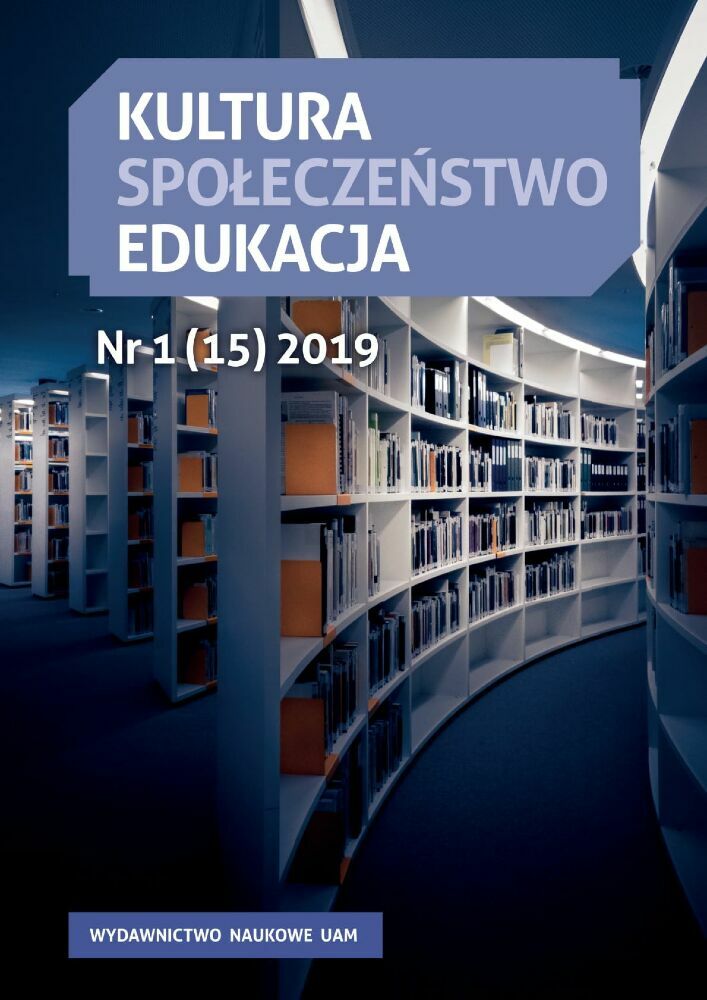Abstrakt
This article explores current issues of minority education in China, especially in the context of religion and language education. In the first part of the article, the author describes (1) cultural and political framework of Chinese education in general and (2) current educational conditions, also discussing differences in educational attainment for minority groups in China. The second part of the article presents the situation of minority religions, which is not really recognised in state schooling in China. The author shows educational examples from the Tibet region and from Muslim education. The third part of the article explores another major challenge related to ethnic minority schooling, which is language diversity. In the final part of the paper, the author tries to comment on Chinese minority education dilemmas and concludes with some social recommendations.
Bibliografia
Albert E. (2018). Religion in China, https://www.cfr.org/backgrounder/religion-china, access on 29.04.2019.
Bass C. (1998). Education in Tibet: Policy and Practice since 1950 (Politics in Contemporary Asia). London.
Gladney D.C. (1996). Muslim Chinese: Ethnic Nationalism in the People’s Republic. London and Cambridge.
Gladney D.C. (1999). Making Muslim in China: Education, Islamization and Representation [in:] G. A. Postiglione (eds.). China’s National Minority Education. Culture, schooling and development. New York and London, pp. 55-94.
He B. (1998). Can Kymlicka’s Liberal Theory of Minority Rights be Applied in East Asia? [in:] P. van der Velde and A.McKay (eds.). New Developments in Asian Studies. London and New York,pp. 20-44.
The Constitution of the People’s Republic of China of 14 March 2004 (Chapter II, art. 36), http://www.npc.gov.cn/englishnpc/Constitution/2007-11/15/content_1372964.htm, access on 01.08.2016.
Kurpaska M. (2010). Chinese language(s): a look through the prism of The Great dictionary of modern Chinese dialects. Berlin/New York.
Leibold J. (2013). Ethnic Policy in China: Is Reform Inevitable? “Policy Studies” East-West Center, no 68.
Leibold J., Yangbin Ch. (2014). Introduction: Minority Education in China Minority Education in China: Balancing Unity and Diversity in an Era of Critical Pluralism [in:] J. Leibold, Ch. Yangbin (eds.). Minority Education in China, Balancing unity and diversity in era of critical pluralism. Hong Kong, pp. 1-24.
Mackerras C. (1999). Religion and the Education of China’s Minorities [in:] G. A. Postiglione (eds.). China’s National Minority Education. Culture, schooling and development. New York and London, pp. 23-53.
Mańkowska A. (2018). Linguistic educational reality in multicultural China. Unity or diversity? (Językowa rzeczywistość edukacyjna w wielokulturowych Chinach. Jedność czy różnorodność?) “Pedagogika Szkoły Wyższej,” 2018, 2/2017 (22), pp. 121-132, DOI: 10.18276/psw.2017.2-11
Nima B. (1997). The way out for Tibetan education. “Chinese Education & Society,” 30 (4), pp. 7-20.
Postiglione G.A. (1998). State Schooling and Ethnicity in China: The Rise or Demise of Multiculturalism? http://files.eric.ed.gov/fulltext/ED427100.pdf, access on 12.08.2015.
Rong M. (2014). Bilingual education and language policy in Tibet [in:] J. Leibold, Ch. Yangbin (eds.). Minority Education in China, Balancing unity and diversity in era of critical pluralism. Hong Kong, pp. 83-106.
Smith W. (2009). China’s Tibet? Autonomy or assimilation? New York.
Stites R. (1999). Writing cultural boundaries, National minority language policy, literacy planning and bilingual education [in:] G. A. Postiglione (eds.). China’s national minority education: Culture, schooling, and development. New York, pp. 95-130.
Unesco, Expenditure on education as % of GDP (from government sources), http://data.uis.unesco.org/Index.aspx?DataSetCode=EDULIT_DS&popupcustomise=true&lang=en, access on 01.08.2015.
Young I.M. (1998). Polity and Group Difference: A Critique of the Ideal of Universal Citizenship [in:] G. Shafir (eds.). The Citizenship Debates: A Reader. Minneapolis-Londyn. pp. 263-291.
Young R., Wu M. (2009). Education for ethnic minorities in China: a policy critique. “Special Edition on Education and Ethnicity,” Volume 6, Number 2, pp. 117-131.
Zhenzhou Z. (2014). The trilingual Trap [in:] J. Leibold, Ch. Yangbin (eds.). Minority Education in China, Balancing unity and diversity in era of critical pluralism. Hong Kong, pp. 239-258.
Licencja
Prawa autorskie (c) 2020 Anna Mańkowska

Utwór dostępny jest na licencji Creative Commons Uznanie autorstwa – Bez utworów zależnych 4.0 Międzynarodowe.

